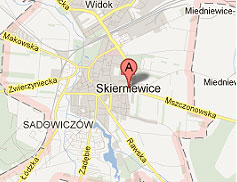PUBLIKACJE NAUKOWE
WYSZUKAJ PUBLIKACJE
Assessment of dimensions in order to aid classification of european red mite and two-spotted spider mite by means of digital imaging of infected leaves./ Ocena rozmiarów i parametrów kształtów przy użyciu komputerowej analizy obrazu jako narzędzie rozróżniania przędziorka owocowca i przędziorka chmielowca
Konopacki P., Warabieda W.
2018
Agricultural Engineering, 22(4): 15-24
classification; mites; Panonychus ulmi; shape; size; Tetranychus urticae
Badania nad możliwością przechowywania biokondycjonowanych nasion marchwi oraz ocena efektu ochronnego i wartości siewnej
Janas R., Grzesik M., Górnik K.
2018
W: Rolnictwo XXI wieku – problemy i wyzwania 2018. Red. D. Łuczycka, Wyd. Idea Knowledge Future, Wrocław 2018: 123-132. ISBN 978-83-945311-9-5
Balling behavior of workers toward honey bee queens returning from mating flights
Gerula D., Panasiuk B., Bieńkowska M., Węgrzynowicz P.
2018
Journal of Apicultural Science, 62(2): 247-256
balling of queens, mating flights, queen losses
Bee bread cells in honey super distort the results of pollen analysis of honey
Teper D., Semkiw P., Skubida P., Borański M.
2018
Journal of Apicultural Science, 62(2): 257-263
bee bread, bee bread pollen in honey, pollen analysis
Biological control of the soil-borne fungal pathogen Sclerotinia sclerotiorum – a review
Smolińska U., Kowalska B.
2018
Journal of Plant Pathology, 100(1): 1-12
fungal pathogens, sclerotia, carpogenic germination, antagonistic microorganisms
Breeding of lilies and tulips—Interspecific hybridization and genetic background
Marasek-Ciołakowska A., Nishikawa T., Shea D. J., Okazaki K.
2018
Breeding Science, 68: 35-52
chromosome, GISH, interspecific hybridization, Lilium, phylogeny, Tulipa
Breeding value of selected blackcurrant (Ribes nigrum L.) genotypes for early-age fruit yield and its quality
Masny A., Pluta S., Seliga Ł.
2018
Euphytica, 214(6): 89
Fruit weight, extract, ascorbic acid content, combining ability, GCA, SCA
Cacopsylla pruni in Poland and its significance as a vector of ‘Candidatus Phytoplasma prunorum’
Warabieda W., Soika G., Cieślińska M.
2018
Zemdirbyste-Agriculture, 105(2): 177–182
‘Candidatus Phytoplasma asteris’, European stone fruit yellows
Capacitance probe
Klamkowski K., Gard B.
2018
In: The Fertigation Bible. Technologies to optimise fertigation in intensive horticulture. Eds. R. Thompson, I. Delcour, E. Berckmoes, E. Stavridou, FERTINNOWA consortium, Sint-Katelijne-Waver, 10.23: 10.112-10.116. ISBN 978-1-5272-2327-1
Chapter 6. Fruit Crop Phytoplasmas
Fiore N., Bertaccini A., Bianco P.A., Cieślińska M., Ferretti L., Hoat T.X. Quaglino F.
2018
In: Phytoplasmas: Plant Pathogenic Bacteria – I. Characterisation and Epidemiology of Phytoplasma - Associated Diseases. Eds. G.P.Rao, A. Bertaccini, N. Fiore, L.W.Liefting, Springer Nature Singapore Pte Ltd., Singapur: 153-190. ISBN 978-981-13-0118-6
INSTYTUT OGRODNICTWA – PAŃSTWOWY INSTYTUT BADAWCZY
Siedziba Dyrekcji
ul. Konstytucji 3 Maja 1/3
96-100 Skierniewice
Tel.: 46 833 22 11 do 13 - Centrala
Fax: 46 833 31 86
e-mail: io@inhort.pl
ul. Pomologiczna 18
96-100 Skierniewice
Tel.: 46 833 20 21 - Centrala, 46 833 42 23 - Centrala
Fax: 46 833 32 28
ZAKŁAD PSZCZELNICTWA
W PUŁAWACH
ul. Kazimierska 2A
24-100 Puławy
Tel.: 81 886 42 08, 81 886 21 64
Fax: 81 886 42 09
e-mail:zaklad.pszczelnictwa@inhort.pl
© Copyright 2011 Instytut Ogrodnictwa, wszystkie prawa zastrzeżone / Kontakt: < Redaktor > < Webmaster >


